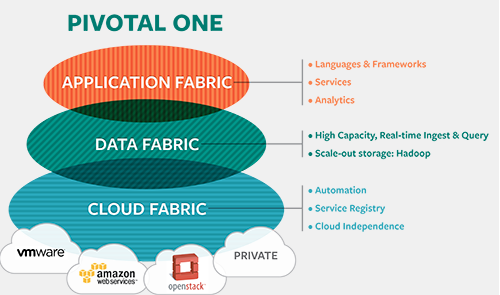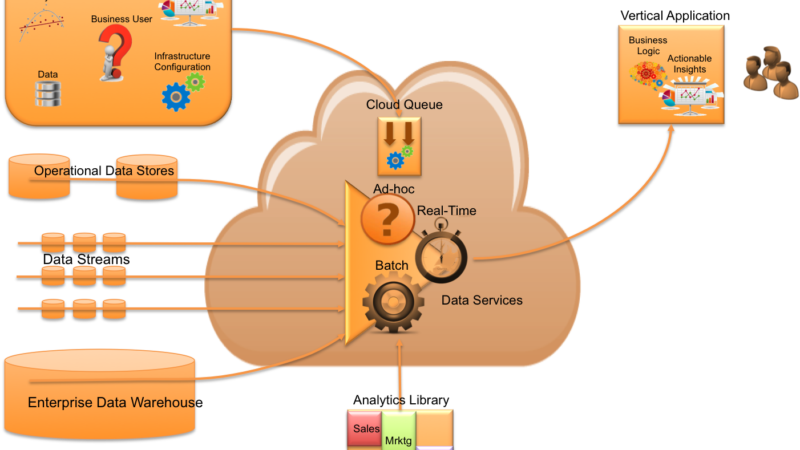Platform as a Service = Application Focus = $True Value (IaaS is dead)
I’m not going to get into revenue predictions here. The assumption is that we already appreciate the difference between private, virtual private, and public cloud markets and within those, it’s a question of how high in the enterprise software stack you operate.
If you operate in the Public Cloud arena, then it makes sense to move into SaaS as fast as you can. As a SaaS provider, you own the end-user and you create the visible value which equates to the largest revenue opportunities.
If you operate in the Private Cloud arena, I hope that you are NOT in the IaaS business (or also referred to as the “cloud OS”). By default, the Private Cloud IaaS is where companies start (which is good). Private IaaS typically involves “test and development” as the leading application and leverages smaller deployments of virtualized infrastructure (using virtualization solutions from VMware, Citrix, RedHat, Oracle, Microsoft). However, the bad news is that it’s already somewhat commoditized.
Private Cloud Adoption – From Virtualization to IaaS to PaaS to SaaS
Mid to large-sized enterprises are looking to consolidate their data centers and apply automation to their infrastructure. As the enterprise IT and application development staff gets more sophisticated, they will actually begin to adopt 3rd party solutions rather than maintain homegrown solutions. This allows the enterprise IT staff to commoditize their solutions further and relieve critical resources to focus on more strategic business processes.
2011 will mark the beginning of the end of IaaS. Companies like Cloud.com, Eucalyptus, Enomaly, and Surgient will struggle with marginal revenue from medium-sized businesses. If these companies don’t move up the value chain, they will become squeezed by Public XaaS providers (servicing the low-end SMBs) and the Big 5 (IBM, BMC, HP, Novell, CA) who will evolve their heavy/complex System Management platforms into Private Cloud infrastructure offerings.
Why Private PaaS in 2011?
I reference the Cloud Enterprise Architecture we created at SIOS below to only emphasize the next emerging trend…namely, vertical PaaS offerings. Most of the Industry is currently focused on the serving up cloud infrastructure on demand (IaaS). However, to truly provide value to the enterprise, one must move to offering web services that support serving up cloud applications on demand (PaaS). End-users in the enterprise only care about the application, not the infrastructure supporting it. See my most recent post on “Cloud: IT 1.0, 2.0 versus 3.0”.
Platform as a Service (PaaS) provides the enterprise the ability to host application platform capacity as a service to your organization. PaaS challenges the notion that every application requires a unique technology stack unto itself and that businesses can’t free themselves of rigid deployment scenarios for their custom applications.
PaaS is an evolutionary approach to delivering middleware capacity needed to host applications. Many customers today are actually implementing pieces of a PaaS solution without realizing it. When fully implemented, PaaS delivers:
- Rapid (near real-time) middleware capacity provisioning against physical and/or virtual servers
- Highly optimized application to server ratios and the ability to turn off spare capacity
- Cross-domain monitoring and proactive alerting
- Coarse or fine grained metering facilities to establish usage parameters for PaaS tenants
The major benefit of PaaS is cost reduction through accelerated time-to-market (not reduced platform costs and staff…yawn!). Organizations using PaaS techniques typically report operational savings of 30% or higher compared to having individual project teams manage their own infrastructure. Yes, some cost savings come about because of consolidated resources (e.g. servers) as well as elmination of redundant work across teams, but more importantly the ability to launch internal applications in shorter periods of time.
PaaS customers are able to more rapidly deploy environments for development, testing and production. In some cases, the provisioning, configuration, and integration of a platform can take up the majority of an application production schedule. PaaS lets applications get into the hands of testers and end-users nearly as fast as they can be developed.
Amazon will add PaaS services
I suspect that the AWS team will begin to add advanced PaaS services in 2011. Because a majority of enterprise applications are Java-based, I suspect that will be the starting point. However, other development containers for Ruby, PHP, or Python may also come into the mix.
Amazon’s IaaS provides the greatest level of flexibility, allowing the developer to define the app stack (web server, gateway, framework). A PaaS release will need to provide both the abstraction of PaaS with the ability to take back control at the IaaS level.
The ability to offer application services which are easily integrated into the application via an expanded service API will transform the already successful SMB IaaS service to a SMB PaaS service, competing with solutions from Heroku, EngineYard, Azure, etc.
[flagallery gid=5 name=”Gallery”]
Other related articles:
- Cloud Prophecies: The Cloud Era
- SaaS offerings will dominate market (greater value with the end-user application)
- Private Cloud Will Drive the Bulk of Revenue in the datacenter (sorry Amazon)
- Platform as a Service = Application Focus = $True Value (IaaS is dead)
- Financial will drive commercial innovation in Private Cloud
- Government and Manufacturing will lead in Public Cloud (SaaS)
- Power of IT shifts to Application Developers
- System Integrators turn into Managed Service Providers (with Cloud)
- SIs are the gateway into large enterprise for new cloud vendors
- Open (driving more commodity) will become key For the Channel









5 thoughts on “Platform as a Service = Application Focus = $True Value (IaaS is dead)”
Comments are closed.